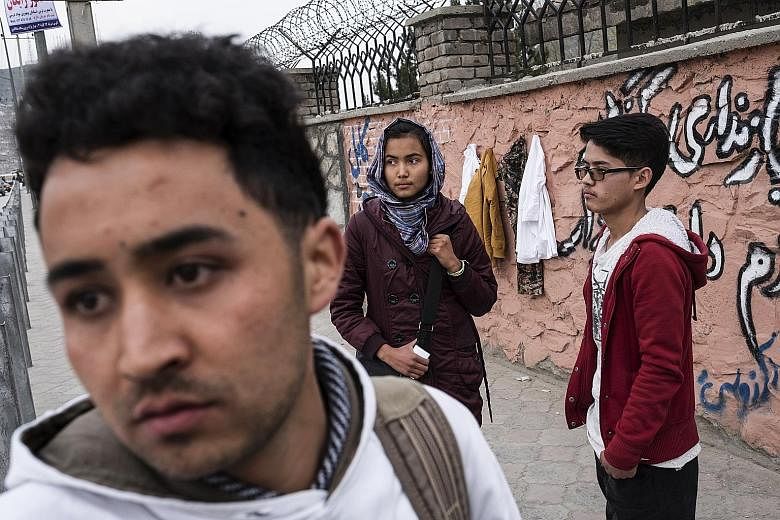KABUL (Afghanistan) • Late last year, the first reported Wall of Kindness went up in Mashhad, Iran, and in the ensuing three months the idea spread to other Iranian cities, then to Pakistan and as far as Xiamen in southern China.
The concept itself is simple: Paint an outdoor wall in a bright colour, usually sky blue, decorate it with slogans about how giving to the poor enriches the giver as much as the receiver, then provision the wall with nails so passers-by can hang up clothing to donate.
The messages on the walls have varied - peace, kindness, poetry - but they have all included this command: "If you don't need it, leave it; if you need it, take it."
Once the idea reached Afghanistan a month ago, it spread quickly. Donor walls appeared all over - in the cities of Mazar-i-Sharif, Lashkar Gah and Herat, and in Faryab, Takhar and Baghlan provinces. Kunduz, the northern city still trying to recover from its devastation during a Taliban takeover last year, had four of them.
But in Kabul, no one seemed interested until a 16-year-old named Halima Behroz was watching a televised report about an Iranian wall. She turned to her brother, Abdul Latif, 17, and said: "Let's do it."
Abdul had some experience painting walls as a graffiti artist who roams town with a group spray-painting peace slogans and scrawling murals. He rounded up his crew, about 20 high schoolers aged 14-17, and with Halima started the Lantern Charity Group.
The group includes Sakina Saidi, 14, who has two older brothers in Kabul and a father who runs a food stall in Kuwait and sends money home to pay the tuition at her private school.
Sakina's father told the members of the group that he would match whatever funds they raised to get started, she said, so they pooled their pocket money and savings and soon had 7,000 afghanis (S$140). That would be enough for spray paint and nails, plus bus fare to transport group members to the future wall.
Money proved to be the least of their problems. The owner of a building in the busy downtown area of Shar-e Naw, which had an invitingly blank wall on a busy street, refused to let them use it, on the grounds that crowds might gather and attract a suicide bomber. They were turned away from Kabul University after being told that it would be defacing government property.
Finally, the principal of Habibia High School allowed them to use a patch of the compound wall around his institution.
They painted their wall salmon with blue inscriptions, including one, "Humanity is my dream", a famous line by the poet Afghans know as Maulana, but the rest of the world knows as Rumi.
The youths had other problems. After they pounded their nails in, they returned the next morning to find that someone had stolen them all. Then, for frustratingly long periods, they had a Wall of Kindness, but not much kindness. Hardly anyone was leaving garments. Young men would stroll by and mock them.
One day this month, the group was finding few clients, either givers or takers, at the wall on Darulaman Road, which begins in a squalid slum next to the fetid Kabul River and ends at the old royal palace. The new array of nails sported two T-shirts, a shirt and a pair of camouflage trousers, plus a jacket.
Along came a janitor from the school, Mr Muhammad Hashem, 50, who picked up the shirt for one of his four children. "I don't know who did this, but it's great," he said, explaining that his salary was only 6,000 afghanis a month, so he did not buy a lot of clothing most months.
Kabul's young humanitarians were conferring recently about their Wall of Kindness conundrum and came up with a new idea. They will go en masse to the homes of rich Kabulis. "We'll ask them to give us their clothes," Sakina said.
Then they can seed the wall and maybe get things going for real.
NEW YORK TIMES

